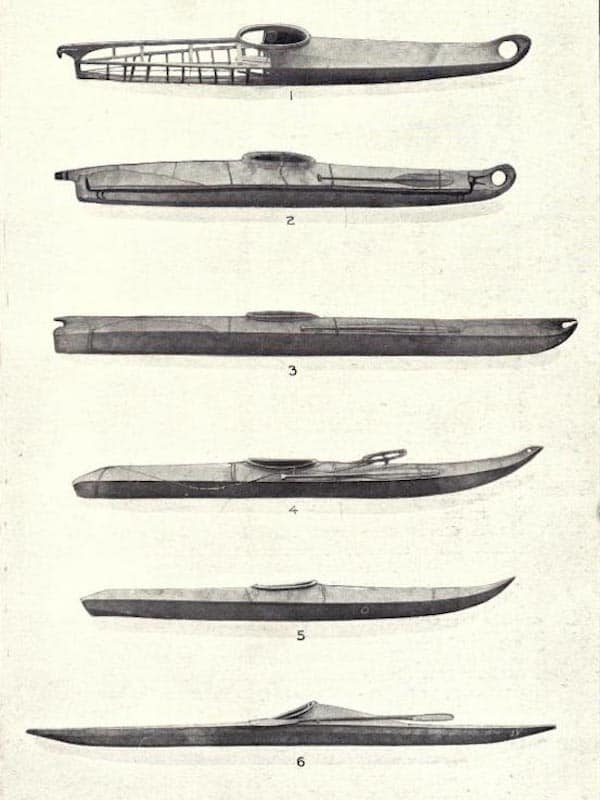Kayaking isn’t just a modern past time that people do for fun on the weekend. It’s been a huge part of human survival for thousands of years.
In this post, we’re going to take a look at how the kayak has been used over the centuries and how it evolved to its current form.
Who created the kayak?

The kayak was created by the Inuit, Yupik and Aleut tribes at least 4000 years ago.
These people inhabited the arctic areas of north America such as Alaska, Canada, Greenland as well as the far eastern regions of Russia.
The first kayaks were primarily used for hunting and transport. In fact the word kayak actually means ‘man’s boat’ or ‘hunter’s boat’.
These tribes would use the kayak to hunt seals and walruses on rivers and coastal regions of the arctic.
The first designs and materials

The original kayak frames were made out of whatever materials were available, often driftwood or even whale bones.
They would then wrap the kayak frames in animal skin, primarily seal skin with a coating of whale fat to keep them watertight.
Every kayak was built specifically to fit its owner with a very specific set of formulas to work out how wide and long it should be.

The first use of kayaks for sport and recreation
Eventually, in the middle of the 19th century, word of the kayak reached Europe and before long people were using the kayak for recreation and sport.
The kayak was popularised John MacGregor. MacGregor was an explorer and travel writer.
He designed a kayak which became known as ‘The Rob Roy’ which he travelled the world in visiting lots of Europe, The Middle East and Africa even once being captured by a local tribe!
He would then write about his journeys publishing a book called ‘A Thousand Miles in the Rob Roy Canoe on Rivers and Lakes of Europe.’
Kayaking eventually became an olympic sport when it featured for the first time at the 1936 Berlin olympics.
Evolution of kayaking

The traditional design of kayaks remained unchanged for thousands of years. The kayaks of the late 19th and early 20th century were still made of wood but swapped out animal skin for canvas or plywood covers.
But as modern materials progressed this opened up more possibilities for the design of kayaks to progress with it.
The 1950s onwards saw the first kayaks made out of fibreglass and carbon fibre which revolutionised boat construction.
These new materials made kayaks a lot lighter and stronger than traditional wooden ones and many new kayak designs came on to the market as it was possible to make rounded shapes.
The plastic revolution
Then, in the 1980s came plastic.
The introduction of plastic totally revolutionised kayak design as it it was so much stronger and more durable than previous materials.
It also made construction a lot cheaper whilst maintaining performance and opened up kayaking to more people.
Nowadays there are lots of different types of kayak available in a whole host of materials, sizes and shapes with different features depending on what you want to do with your kayak.
There is constant innovation going on in the kayaking world so we’re looking forward to seeing what will be the next chapter in kayaking history as new designs and materials open up more opportunities.
Stay tuned!
